[MEET THE EXPERT] - Medical Cluster
[MEET THE EXPERT] - Medical Cluster
[MEET THE EXPERT] - Medical Cluster
Erfolgreiche ePaper selbst erstellen
Machen Sie aus Ihren PDF Publikationen ein blätterbares Flipbook mit unserer einzigartigen Google optimierten e-Paper Software.
Switzerland and the U.S.: Two Nations With a Shared Investment in Med-Tech<br />
Mark McCarty, Washington Editor, <strong>Medical</strong> Device Daily<br />
The nations of Switzerland and the United States<br />
have much in common despite that the two have no<br />
common official language. One of the most<br />
obvious common characteristics is that both<br />
nations have invested large sums in medical<br />
technology, but the economic ties between the two<br />
nations are also of great importance. The U.S.<br />
Department of Commerce recently reported that<br />
Switzerland was the largest foreign direct investor<br />
in the U.S. last year at more than $42 billion, while<br />
the U.S. was the largest direct investor in<br />
Switzerland as well, with more than $148 billion<br />
invested in the Swiss economy in 2010.<br />
One of the more noteworthy differences between<br />
the two nations is found in the respective<br />
educational systems. In U.S. public school<br />
systems, the content of instruction varies little<br />
through grade 12, whereas many cantons in<br />
Switzerland offer students differentiated schooling<br />
after grade 5 or 6. Obviously, vocational education<br />
is emphasized in Switzerland more than in the<br />
U.S., which explains why Switzerland has a larger<br />
pool of skilled technical labor as a percentage of<br />
the population than the U.S.<br />
A fact of life in the med-tech industry common to<br />
both nations is that industry is populated<br />
principally by small companies. According to the<br />
latest edition of the Swiss Medtech Report by<br />
Medtech Switzerland, approximately 1,400<br />
companies in Switzerland are involved in medtech<br />
manufacturing, but 75% of those companies have<br />
fewer than 50 employees.<br />
The situation in the U.S. is very similar. According<br />
to testimony by Stephen Ubl, President/CEO of the<br />
Advanced <strong>Medical</strong> Technology Association<br />
(AdvaMed), approximately 7,000 firms in the U.S.<br />
were making medical devices and diagnostics in<br />
2007, but 62% of those companies had 20 or fewer<br />
employees. It may also be true that in both nations,<br />
small companies are the source of the vast majority<br />
of innovative medtech products.<br />
In terms of investors, the primary source of<br />
medical technology innovation in the U.S. is<br />
venture capital (VC), which fell by more than 30%<br />
between 2008 and the end of 2010. However, a<br />
recent report indicates that VC has moved back<br />
into American life sciences, including medtech.<br />
According to a report published by<br />
PricewaterhouseCooper (PwC; New York) in<br />
August, investment in U.S. medtech in the second<br />
quarter of 2011 was up 9% over the same quarter<br />
in 2010, as VC firms invested $841 million to<br />
close 90 transactions, a sum the PwC report states<br />
was “the highest level of funding” for medtech<br />
since the third quarter of 2008, and which ranks as<br />
the seventh highest total in the past 16 years.<br />
For Switzerland, venture capital has expressed a<br />
strong preference for life science investment in<br />
recent years. According to the 2011 venture capital<br />
report filed by the Swiss Private Equity &<br />
Corporate Finance Association (Basel,<br />
Switzerland) more than 80% of Swiss venture<br />
capital went to life science investments in 2009,<br />
with computers and other consumer electronics<br />
coming in a distant second at 10%. However, the<br />
report does not break the numbers down for<br />
medtech and pharmaceuticals and biotech.<br />
Both Switzerland and the U.S. have a large number<br />
of citizens approaching retirement. According to<br />
the Swiss Federal Statistics Office, one of three<br />
adults in Switzerland will retire by 2050. The U.S.<br />
“baby boom” will retire slightly earlier. By the<br />
mid-2030s, one in four Americans will reach<br />
retirement age. In both cases, this presents an<br />
outstanding opportunity for device makers in terms<br />
of demand.<br />
The problem presented by so many elderly citizens<br />
is that healthcare spending is increasing rapidly.<br />
This may be a more significant economic and<br />
political issue in the U.S. than in Switzerland, but<br />
neither nation can take the subject lightly.<br />
According to the Organization for Economic<br />
Cooperation and Development, per capita<br />
healthcare spending in the U.S. rose from $4,700<br />
in 1998 to more than $7,500 in 2008. In<br />
Switzerland, the figure in 1998 was slightly more<br />
than $3,200 per person, and reached more than<br />
$4,600 in 2008. These increases cannot be<br />
sustained for long, and political leaders in both<br />
nations must find ways to provide health insurance<br />
for their citizens without damaging their native<br />
sources of medical technology.<br />
8


![[MEET THE EXPERT] - Medical Cluster](https://img.yumpu.com/8021008/8/500x640/meet-the-expert-medical-cluster.jpg)
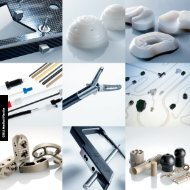
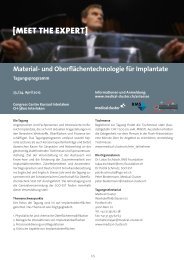


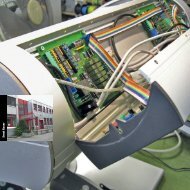


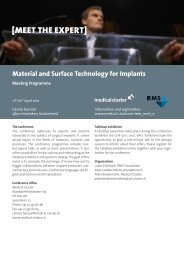
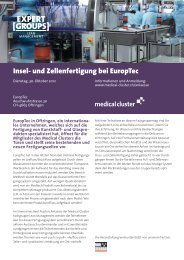
![[MEET THE EXPERT] - Medical Cluster](https://img.yumpu.com/4254707/1/184x260/meet-the-expert-medical-cluster.jpg?quality=85)